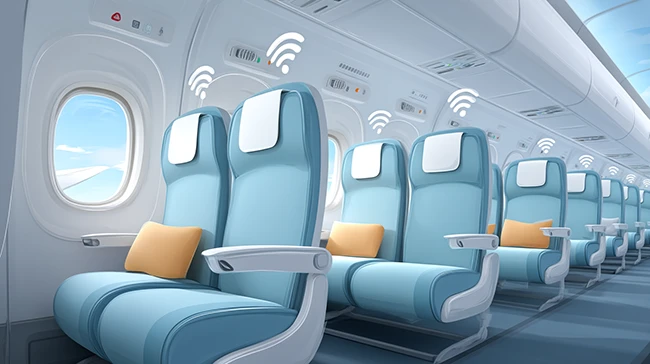Aircraft cabin IoT leaves vendor and passenger data exposed
The expansion of IoT devices in shared, multi-vendor environments, such as aircraft cabins, has created tension between the benefits of data collaboration and the risks to passenger privacy, vendor intellectual property, and regulatory compliance.

A new study finds that even with protections that scramble data while it moves between devices, sensitive information often remains exposed once it reaches its destination.
The moment information becomes exposed
The cabin network works by having devices send updates to a central system, and other devices are allowed to receive only certain updates. In this system an authorized subscriber is any approved participant on the cabin network, usually a device or a software component that is allowed to receive a certain type of data.
The privacy issue begins after the data arrives. Information is protected while it travels, but once it reaches a device that is allowed to read it, that device can view the entire message, including details it does not need for its task. The system controls who receives a message, but it does not control how much those devices can learn from it.
The study finds that this creates the biggest risk inside the cabin. Trusted devices have valid credentials and follow all the rules, and they can examine messages closely enough to infer raw sensor readings that were never meant to be exposed. This internal risk matters because it influences how different suppliers share data and trust each other.
Someone in the cabin might also try to capture wireless traffic, but the protections on the wireless link prevent them from reading the data as it travels. This is a smaller concern because the real exposure happens inside the network when a device that is supposed to receive the data studies its contents in detail.
Passenger patterns reflected in sensor readings
The study shows how different kinds of cabin data can reveal more than intended. One example focuses on a smart coffee machine that sends out its temperature changes during brewing. Any approved device on the network can see that curve, and a competing supplier could study it to work out how the machine is designed.
Another example looks at data collected from passengers. In one test, sensors were used to figure out whether a seat was empty and whether the person in it had fastened their seatbelt. To do this, the system relied on tiny accelerometers that track how the seat moves.
The researchers found that these raw motion readings can carry extra clues such as small shifts linked to breathing, slight tremors or hints about a person’s body shape. Details like these show why movement data needs protection before it is shared across the cabin network.
Privacy methods that fit the cabin limits
The research looks at methods that can run on small devices without slowing them too much. Two methods stand out because they protect information at the moment it is created, which is the only point where exposure can still be prevented.
The first method, differential privacy, adds a small amount of random variation to each reading. This keeps the overall pattern useful but hides the exact value. The study found that this variation can be added while still keeping the data useful for regular monitoring tasks.
The second method, secret sharing, cuts each reading into several pieces and sends each piece through a different path. A subscriber can rebuild the original value only when all pieces arrive. This prevents any single path from revealing the entire value, although it can add delay if one piece arrives late or is lost.
Both methods limit what a subscriber can learn from a message. By protecting each reading on the device before it is sent, the raw values never enter the shared network. Once a raw value is sent into the cabin network it cannot be made private again.
Network structure influences performance
The team also tested whether these protections add delay, since timing is essential for cabin services.
One of the notable findings is that privacy methods run fast enough for cabin use. Delays come mainly from the structure of the network. Each time a message travels through the message broker, it absorbs delay. When a value takes several steps through the publish and subscribe pattern, timing grows longer.
The results show that privacy logic contributes only a small share of the total delay. In one evaluation, privacy overhead stayed under one percent of the overall processing time. The message path had far more influence on performance than the privacy function.
To confirm these patterns, the authors used a hardware testbed built with small sensor nodes, a message broker, and virtual processing nodes. The setup mirrors cabin conditions without requiring exact replicas of aircraft systems. This helps ensure that the findings reflect realistic behavior.
A direction for future cabin systems
The authors suggest that future cabin systems may adjust privacy settings based on trust, sensor type, and service needs. They also note that devices may use dedicated hardware blocks to support privacy functions without slowing service loops. The broader conclusion is that privacy must sit alongside transport protections and must align with the structure of the cabin network.